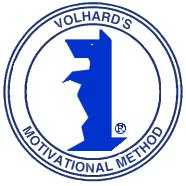 |
|
PUPPY APTITUDE TEST |
|
|
|
Developed by Joachim and Wendy Volhard |
|
|
|
This score sheet has been prepared for the convenience of those who have |
|
PUPPY APTITUDE TEST Puppy (color, sex) ________________ litter ______________________ date ____________ |
|
|
|
Some Test Interpretation · Mostly 1's A puppy that consistently scores a 1 in the temperament section of the test is an extremely dominant, aggressive puppy who can easily be provoked to bite. His dominant nature will attempt to resist human leadership, thus requiring only the most experienced of handlers. This puppy is a poor choice for most individuals and will do best in a working situation as a guard or police dog. · Mostly 2's This pup is dominant and self-assured. He can be provoked to bite; however he readily accepts human leadership that is firm, consistent and knowledgeable. This is not a dog for a tentative, indecisive individual. In the right hands, he has the potential to become a fine working or show dog and could fit into an adult household, provided the owners know what they are doing. · Mostly 3's This pup is outgoing and friendly and will adjust well in situations in which he receives regular training and exercise. He has a flexible temperament that adapts well to different types of environment, provided he is handled correctly. May be too much dog for a family with small children or an elderly couple who are sedentary. · Mostly 4's A pup that scores a majority of 4's is an easily controlled, adaptable puppy whose submissive nature will make him continually look to his master for leadership. This pup is easy to train, reliable with kids, and, though he lacks self-confidence, makes a high-quality familly pet. He is usually less outgoing than a pup scoring in the 3's, but his demeanor is gentle and affectionate. · Mostly 5's This is a pup who is extremely submissive and lacking in self-confidence. He bonds very closely with his owner and requires regular companionship and encouragement to bring him out of himself. If handled incorrectly, this pup will grow up very shy and fearful. For this reason, he will do best in a predictable, structured lifestyle with owners who are patient and not overly demanding, such as an elderly couple. · Mostly 6's A puppy that scores 6 consistntly is independent and uninterested in people. He will mature into a dog who is not demonstrably affectionate and who has a low need for human companionship. In general, it is rare to see properly socialized pups test this way; however there are several breeds that have been bred for specific tasks (such as basenjis, hounds, and some northern breeds) which can exhibit this level of independence. To perform as intended, these dogs require a singularity of purpose that is not compromised by strong attachments to their owner. The remainder of the puppy test is an evaluation of obedience aptitude and working ability and provides a general picture of a pup's intelligence, spirit, and willingness to work with a human being. For most owners, a good companion dog will score in the 3 to 4 range in this section of the test. Puppies scoring a combination of 1's and 2's require experienced handlers who will be able to draw the best aspects of their potential from them. |
||
|
|
||
|
(First published in the AKC Gazette, March 1979, in an article by Melissa Bartlett.) |
||
|
BUY THE BOOK! (at Amazon.com) |
|
[Home] [Get A Sheepdog] [Community] [Memories] [OES Links] [OES Photos] [Grooming] [Merchandise] [Search] |
|
Please contact our Webmaster with questions or comments. |
|
|
Copyright 2000 - 2010 by OES.org. All rights reserved. |

